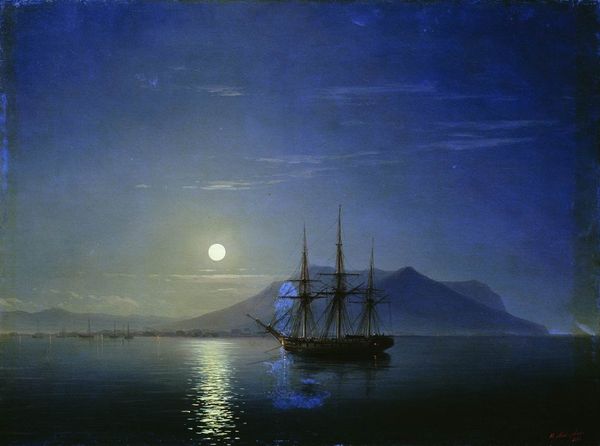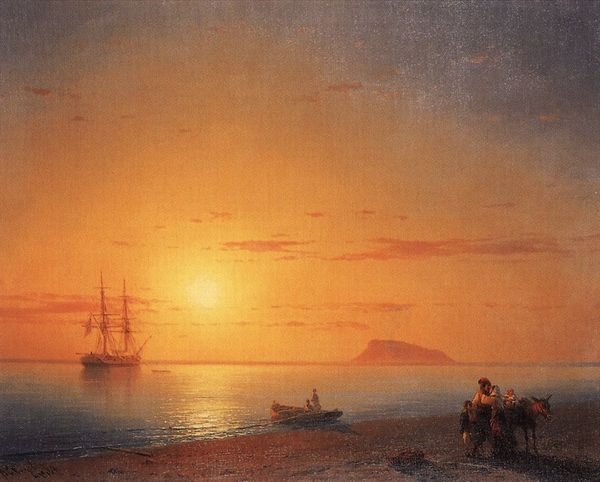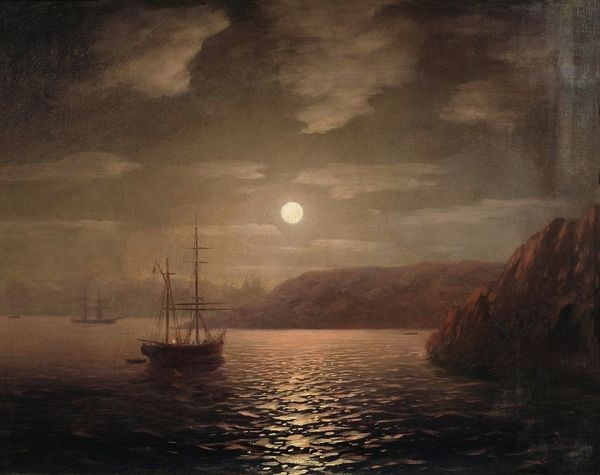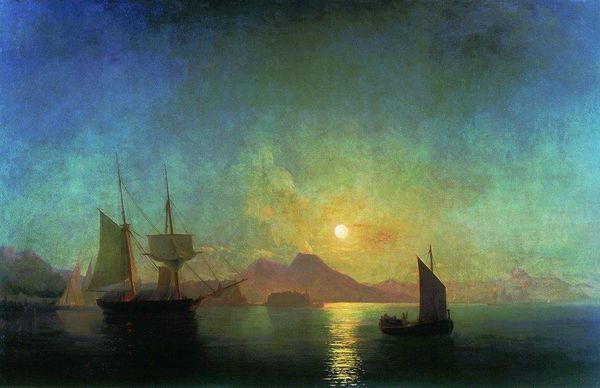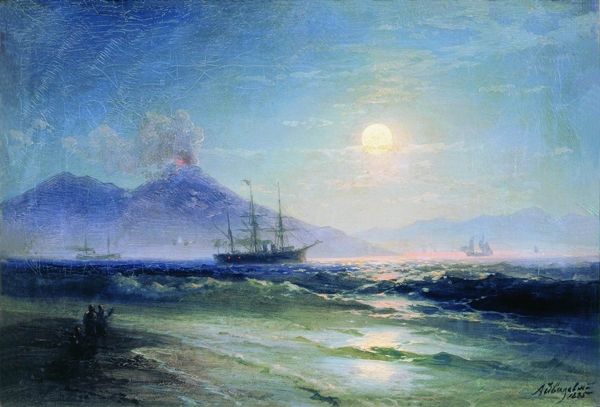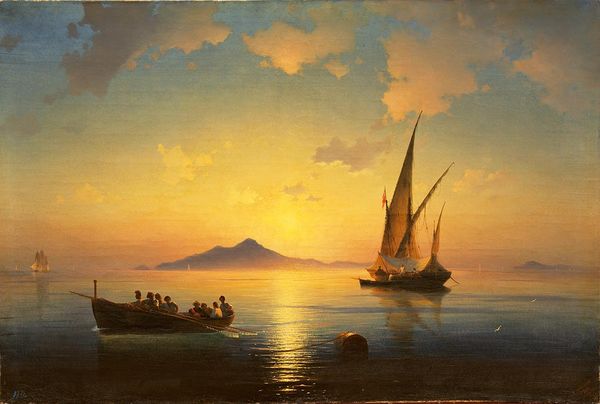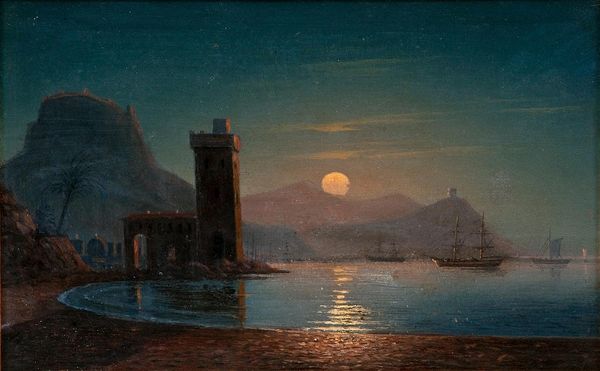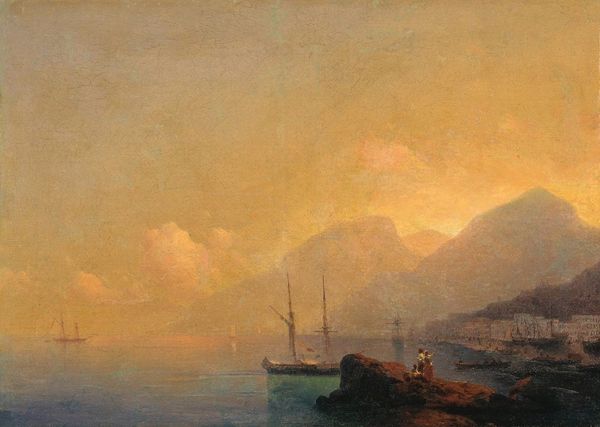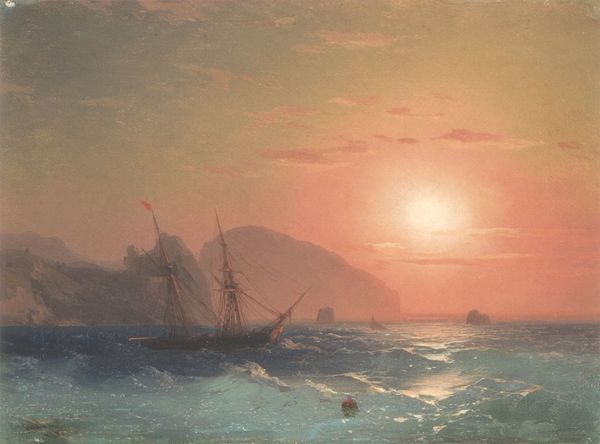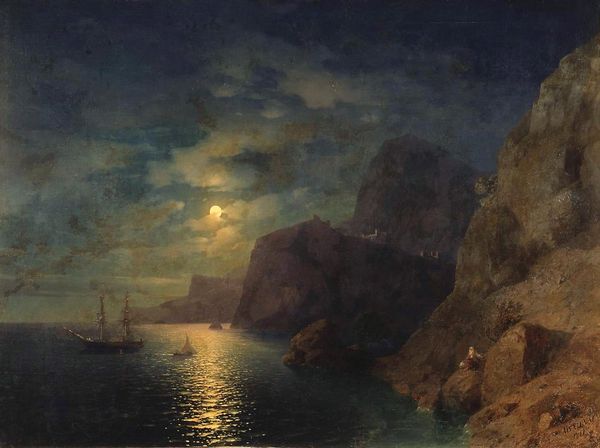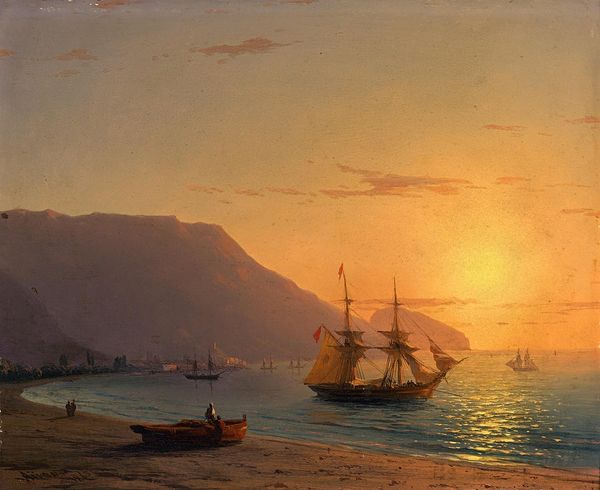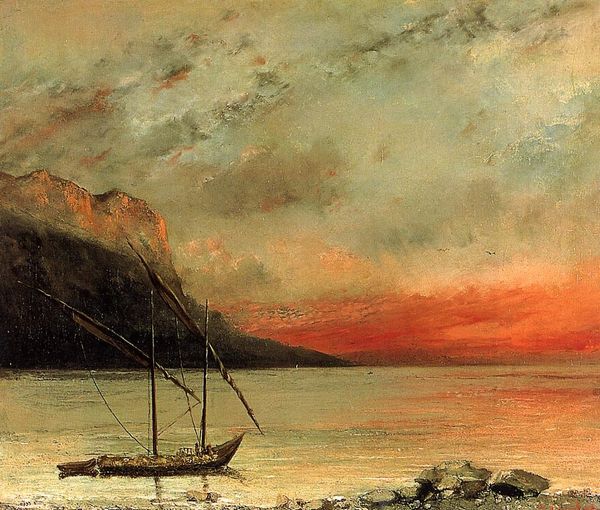
Copyright: Public domain
Editor: So, this is Ivan Aivazovsky's "View of the Sea at Night," painted in 1873, using oil on canvas. I find it incredibly dramatic, almost theatrical with the stark contrast between the moonlight and the dark sea. How do you interpret this work? Curator: I see this as a prime example of Romanticism’s fascination with the sublime, especially in its representation of nature. Aivazovsky’s focus wasn’t simply to depict a seascape, but to evoke powerful emotions. Considering the historical context, how might rapid industrialization and urbanization in the 19th century have influenced Aivazovsky's contemporaries' appreciation for such scenes? Editor: That's a great question! Maybe people yearned for the untouched, powerful beauty of nature as a counterpoint to the burgeoning cities. Did the location of the painting -- its "exhibition context," if you will -- shape the audience's understanding? Curator: Absolutely. Aivazovsky was a celebrated artist in Russia. His seascapes resonated with a growing sense of national identity, especially pride in Russia’s naval power and maritime history. Museums became important vehicles to display this power, contributing to a sense of cultural importance. The depiction of the sea served a socio-political function, more than being a purely aesthetic experience. Do you see this "nationalistic pride" influencing his compositions or subject matter? Editor: Now that you mention it, the prominent ship could be seen less as a mere detail and more as a symbol of Russian strength and exploration. Also, Aivazovsky lived and worked in Crimea. The location must have played a significant role as Crimea held considerable strategic importance in 19th-century Russia, influencing perceptions of this art in Russian society. Curator: Precisely! It reveals how art isn't just about personal expression, it’s embedded in socio-political narratives and power structures of the time. The popularity of maritime painting reflects and bolsters Russia's cultural and geopolitical aspirations. Editor: That's such an insightful way to view it. I was focusing so much on the visual drama, I didn't consider its broader context within Russia's history and ambitions. Curator: It’s easy to get lost in the beauty, but the role of the museum as a tool in shaping identity really puts it into perspective. I am walking away having thought more about Russia's place in history, in connection with nature.
Comments
No comments
Be the first to comment and join the conversation on the ultimate creative platform.
